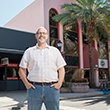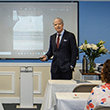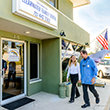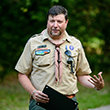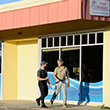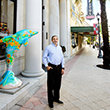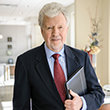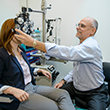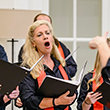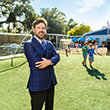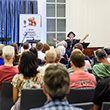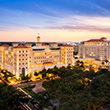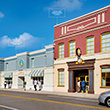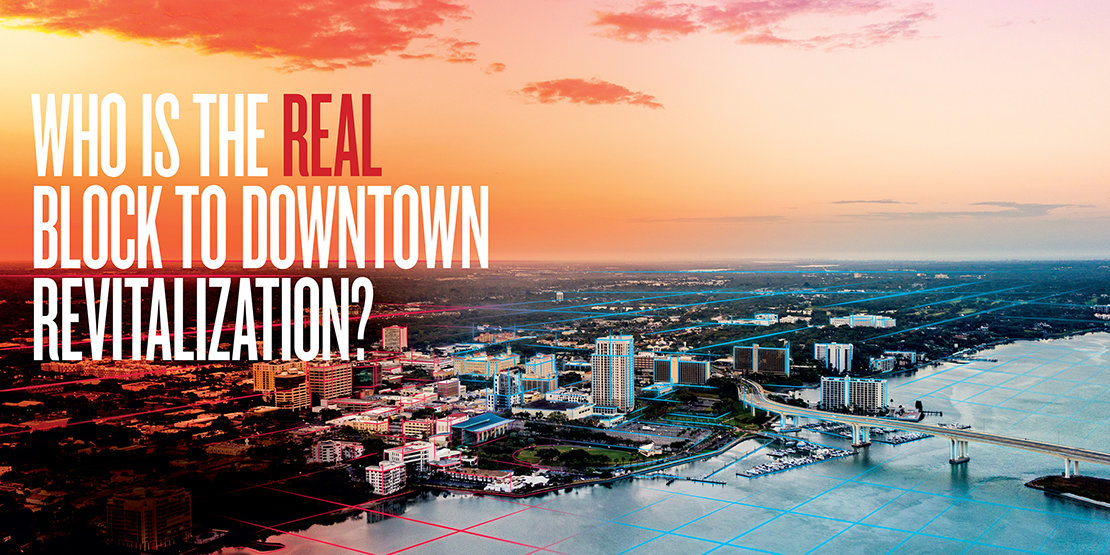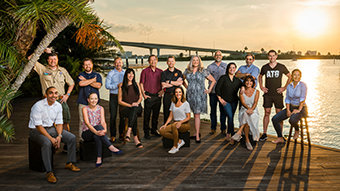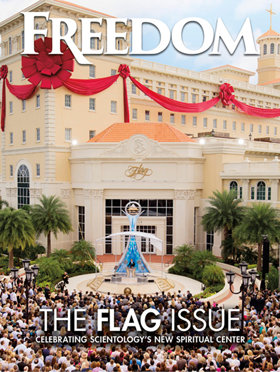More interested in their own agenda than the future of Clearwater, the Tampa Bay Times has worked to sabotage the recommendation of the Urban Land Institute.
In the long history of talks about revitalizing downtown Clearwater, something new happened in June 2014. Since it involved the Church of Scientology, local residents have not to this day read an accurate rendition in the pages of the region’s only “major” newspaper.
Clearwater has been the home of the Church’s international spiritual headquarters for 44 years. Throughout that time, the Tampa Bay Times (earlier the St. Petersburg Times) has maintained a rabidly prejudiced editorial policy—completely ignoring the Church’s positive contributions.
Which explains the Times’ reaction when an optimistic crowd gathered at the Clearwater Beach Hilton on June 20, 2014, to hear the preliminary findings of an Advisory Services Panel of the prestigious Urban Land Institute (ULI)—retained by the City of Clearwater for $125,000 to finally come up with the answer to downtown development.
ULI panel leader Bill Kistler led the presentation at the Hilton. An architect and veteran of successful projects all over the world in his 27 years with ULI, Kistler began by thanking the diverse individuals and groups that had provided input. But Kistler proceeded with a caution. Aware of the Times’ rigid bias, he added, “Those of you who came today, expecting to hear a specific endorsement of your baby, your project, or conversely to hear us demolish what you don’t like, may be disappointed.
“You’re at a fork in the road,” Kistler proceeded. “There’s no stay as-is. You can choose growth and prosperity, you can choose the kind of Clearwater we think you all want. But that’s going to require courage. Courage and compromise and collaboration.
“The alternative is bleak,” he went on. “It can get worse. It does get worse. Let me tell you. You continue stagnation and decline, and we will be here 10 years from now, and the problem will be worse. So, I think, you know, this is a turning point. This is a key fork in the road for you.”
To emphasize the point, Kistler turned the microphone over to ULI panel member Brad Rogers, a city planner. Every problem Clearwater has is exacerbated by the divisions within the community, Rogers began—not only in the obvious division between mainland and beach but more importantly, “You are also divided internally and that division hits all the hot button issues of our day: race, class, ethnicity, language and religion.”
Rogers did not name the source of the divisiveness that has plagued Clearwater for decades. But for most Clearwater residents there is no mystery. The Times has long been known locally as “Pravda West” due to its propaganda campaigns.
Rogers then gave a prelude of the solution—the recommendations that were to appear in the panel’s final report. Where to begin if the city and residents are serious about creating a vibrant downtown? “You have to begin at the top, you have to start with the entities that are the largest organizations in the downtown core,” said Rogers. Referring to the city and the Church of Scientology, Rogers said there was no alternative. “If these two entities with all their influence and sway cannot work together, they cannot reasonably expect anyone else in the community to do so. Partnership starts at the top.
“Let’s focus on something very concrete,” Rogers told the crowd, “the Church brought Starbucks to downtown.” After repeated efforts by others to attract the coffee favorite, the Church succeeded. “I asked people about this in our focus groups,” said Rogers. “Everyone likes Starbucks, and that makes it the template for future partnership and cooperation, not based on some Pollyanna [optimism], but real partnership, which is founded upon genuine, mutual shared interest.”
When the final ULI report (study commissioned by City of Clearwater) was published a few months later, the panel’s conclusion was even more unequivocal: “Of course, partnership and trust building cannot happen all at once. It must start with the largest and most influential players, who must find in themselves the courage to lead. Specifically, this means the City of Clearwater and the Church of Scientology. They are the two largest landowners in the study area; they command the largest budgets; and they have the most influence over public opinion. These two organizations must become partners in the future of the city. If they cannot, no one else will.”
The City of Clearwater and the Church of Scientology … are the two largest landowners in the study area; they command the largest budgets; and they have the most influence over public opinion. These two organizations must become partners in the future of the city. If they cannot, no one else will.”
— Urban Land InstituteAdvisory Panel Report (Study commissioned by City of Clearwater)
Reaction from the Tampa Bay Times was swift and predictable. Times writer Diane Steinle began immediately, saying the ULI recommendations were not “realistic.” Steinle, knowing better than the ULI professionals despite sitting at the Times’ Clearwater desk for decades and contributing nothing of value to downtown development, said the city should instead partner with other nonprofits and “county government.” Times writer Mike Brassfield followed with the mindless complaint that ULI’s “suggestion that the city and the Church of Scientology work together got all the attention” from other media. With typical negativity, the Times headlined Brassfield’s piece, “Does Clearwater still need a downtown?” Constant sniping at every opportunity culminated in a Times editorial that dismissed the idea of mutual collaboration as “laughable.”
Times reporter Tracey McManus was late to the party after moving to Clearwater in August 2015, but rapidly picked up the drumbeat. In the last four years she has referred to the ULI report a dozen times, while performing journalistic gymnastics to avoid actually quoting its key passages about a City-Church partnership—even when provided a copy of the report with the quotes highlighted.
In several hundred pages (literally) of correspondence from Church representatives attempting to answer McManus’ endless, bizarre questions about the Church’s “motives,” it was repeatedly explained that the answer was simple—the Church wanted to help the city implement the recommendations of ULI—because the Church and its members want to reside in a dynamic and vibrant community just like all residents.
McManus was reminded again and again: “The Urban Land Institute study, which you refuse to quote, clearly states that the city and Church must form a PARTNERSHIP. You have been told this multiple times. You have not quoted the ULI study once and nor has anybody else at the Times.”
McManus again refused to publish what ULI had actually stated and didn’t respond to the 22-page letter. When asked if she had read it, she answered with one word, “Yes.”
In one article, McManus quoted ULI Vice President Tom Eitler reportedly expressing that “there’s no sharing” between the Church and the city. That quote, Eitler responded in an email, “is taken completely out of context.” The comment was the view of someone ULI had interviewed, Eitler said. The ULI panel saw the opposite, said Eitler: “The panel saw no evidence that the Church was not cooperating with the city on downtown.” In fact, wrote Eitler, “The many things that the Church is doing to help the city” is “an impressive list.”
PARTNERSHIP
If McManus was frantic at the idea of a partnership between the city and the Church, the suggestion that it might actually happen drove her into a frenzy.
That is what happened in 2017 when McManus and her editorial-writing collaborators sought to destroy a downtown development proposal that would have brought: a 4-acre movie/entertainment complex; a stylish world-class nightspot; a revamp of the facades of four full blocks of Cleveland Street; and the purchasing of downtown’s most impressive office structure, offering it as an inducement for corporations to move downtown.
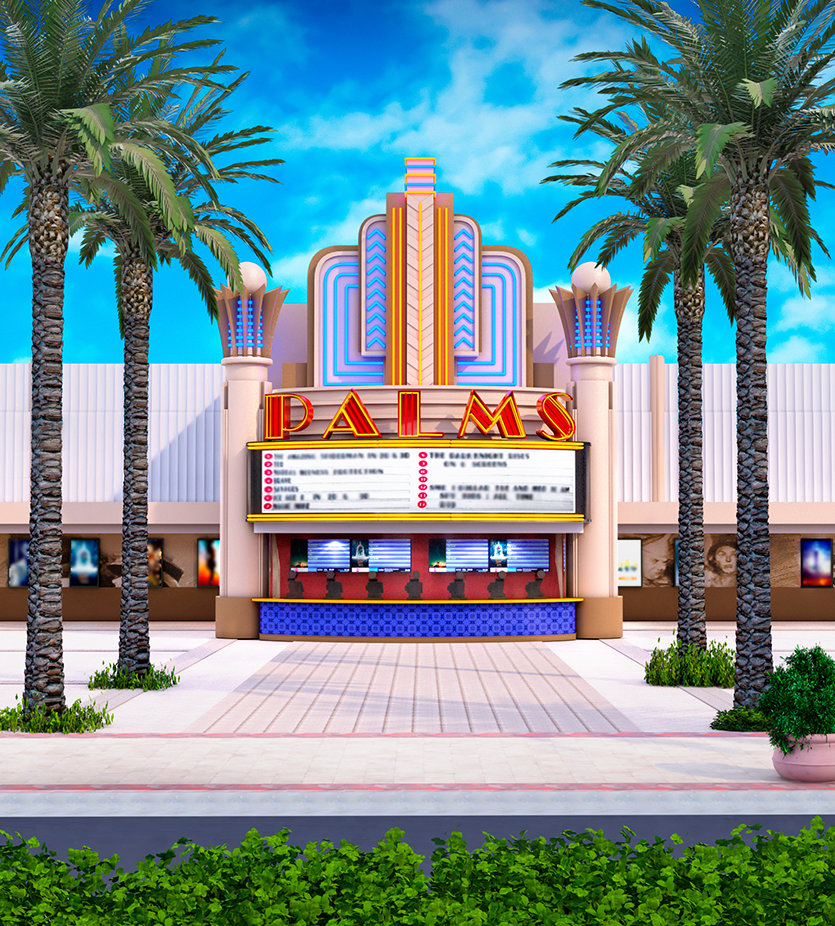

These plans were set in motion in 2016, after the city commissioned HR&A Advisors out of Washington, D.C., to plan out the first phase of ULI’s recommendations—a master plan for the waterfront. At the same time, Church leadership was meeting with city officials in the hope of implementing ULI’s partnership recommendation.
McManus’ reporting continually positioned these discussions as the Church and its leader wanting to dominate downtown. Nothing could be further from the truth. The fact is, the Church was simply responding to a request from the city.
AND HERE’S THE ACTUAL STORY:
For ten years the Church had sought a 1.4-acre vacant lot as the final property needed to complete its downtown campus. The property had been tied up in bankruptcy proceedings for most of that period. However, an opportunity arose when a plan to use the lot for a Clearwater aquarium fell through. With that plan abandoned, the property was available and was the exact piece the Church needed to complete its campus.
The lot sits adjacent to the Church’s Oak Cove, a 13-story residential facility behind the Church’s Fort Harrison retreat, used by Scientologists visiting Clearwater for religious services. As such, the Oak Cove contributes both property taxes and tourist taxes (a “sales” tax paid by guests at any hotel or other overnight accommodation) to both the city and county. But it sits squeezed between a Pinellas County parking structure and the 1.4-acre vacant lot.
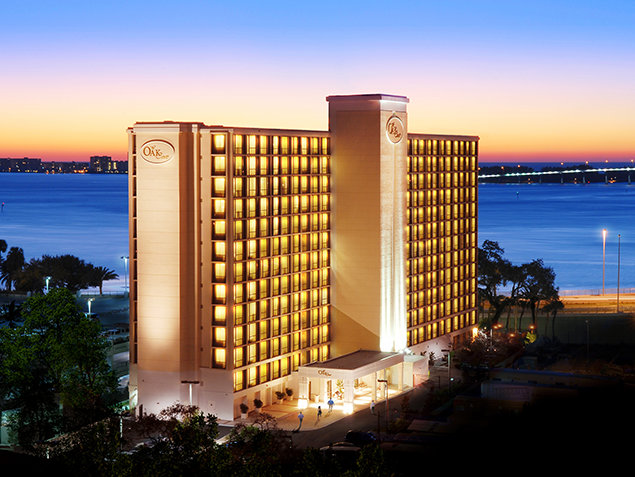
Due to the layout and size of its rooms and suites, the Oak Cove is especially popular among visiting families with children. But unlike practically every similar high-end hotel facility throughout Clearwater, its small land area has no space for a swimming pool, playground and other amenities for children. Also, access for delivery vehicles is difficult. Meanwhile, the adjacent 1.4-acre lot is cut off from the city’s waterfront property—the old City Hall—by a road (Pierce Street), making the long-needed extension of the Oak Cove an obvious best use.
A rumor began to spread that the city was going to buy the property from the aquarium, which would prevent the Church from buying it. The Church’s approach to the city was, “Why are you going to interfere with us completing our campus?”
Ever the provocateur, McManus made it seem that this property had been on the city’s radar screen for years. That is not true. The Church had been attempting to purchase it for a decade from successive prior owners. The city had never made an offer on the property and had never expressed an interest.
The Church offered to pay a premium to the aquarium, far more than they could get from the city. So why would the aquarium still consider selling to the city? Because the aquarium had survived for years on handouts from the city and wanted that subsidy from Clearwater taxpayers to continue. (To date, Clearwater Marine Aquarium has received over $47 million from the City of Clearwater, Pinellas County and the state of Florida in donated property, gifts, grants, subsidized leases and other benefits. Yet, unlike the Church, which is the largest payer of property tax and tourist tax in downtown Clearwater, the aquarium pays $0.00 in those taxes.)


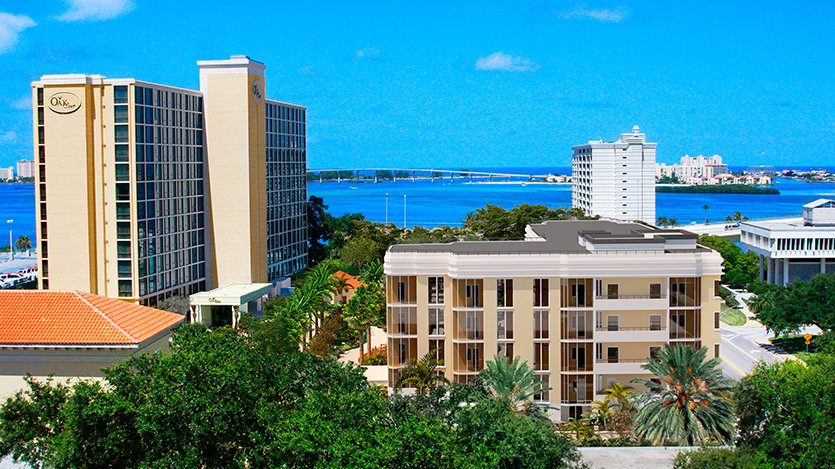
In July 2016, Church leader Mr. David Miscavige met with the city manager and each of the five council members and explained in detail why the property was needed to complete the Church’s campus. He also informed the officials that—unlike the now-defunct aquarium plan—the Church’s use would return the property to the tax rolls and the Church would pay the full taxable value to the city and county.
During those conversations, city officials made it clear they wanted help on redeveloping downtown and wanted the Church to do something about it. The message from city officials was clear: “Do something about downtown and then we won’t interfere with your purchase.”
As talk of these proposals traveled around town, reaction at the Times was predictably one of horror that the city and Church may work together cooperatively. The isolated 1.4-acre lot that for over a decade had hardly been noticed by the city, the Times or anyone else, suddenly became “a key piece of downtown property.” On July 7, 2016, McManus began her propaganda misrepresentations, writing that the city was interested in the lot, “having hired consultants to include it in a master plan currently under way to help revitalize the downtown waterfront.” False. HR&A, the authors of the Imagine Clearwater plan, told the Church the 1.4-acre lot was not essential to the Imagine Clearwater plan and said they had told city officials the same.
Over the following months and into 2017, not only did Mr. Miscavige meet again with city leaders, he also met with individual community leaders and held a 2½-hour meeting with over 70 downtown property owners, community leaders, businessmen, Chamber of Commerce members and others—to brief them on his proposal and to answer their questions.
Mr. Miscavige was not just talking about downtown development. Following the earlier discussions with city officials in 2016, the Church spent $30 million to acquire: a vacant downtown property for a first-run multiplex movie theater/entertainment complex (off Myrtle Ave.); the former SunTrust office tower (not for Church use, but to assist in attracting a private, corporate entity); and property for an upscale nightclub (to be managed by a high-end restaurateur, not the Church).
The property obtained to house the planned nightclub was the historic Ritz building on Fort Harrison Ave., just north of Cleveland St. Originally conceived as the city’s second movie theater, its opening in 1924 was lauded in the local press as an event that would make Clearwater “a real city.” The Church proposed to fund a grand restoration to bring the venue back to something that represented the city back in the day.
The Church commissioned one of the foremost retail strategy companies in the United States to work out exactly what Clearwater residents would most like to see downtown. Surveys were conducted on residents from all parts of the city that identified the types of retail and entertainment residents wanted. The Church then hired a top retail recruitment company to begin the process of recruiting the selected retailers, just as the Church had done with Starbucks.
The Church also had the world’s leading and largest design firm produce preliminary designs for all the retail properties on Cleveland Street in the downtown district. The movie theater/entertainment complex alone—the item most wanted in citizen surveys for years—could have been the anchor every planner and consultant has described as a key to downtown revitalization.
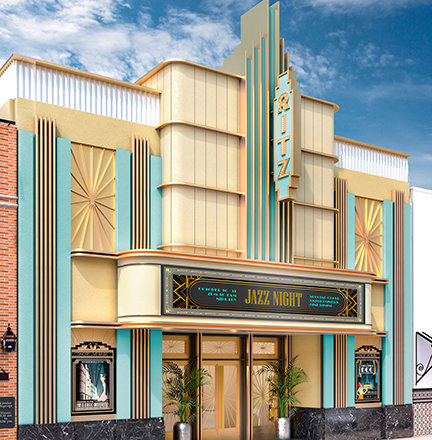




So things were in motion. Further, the Church had no problem doing it since the Church embraced the ULI recommendations and had long desired to assist the city in redeveloping downtown for the benefit of everyone. This would of course include Church parishioners since they are, after all, a significant portion of the residents and visitors who already frequent downtown and patronize local stores and restaurants.
The Church embraced the ULI recommendations and had long desired to assist the city in redeveloping downtown for the benefit of everyone.
As the time approached for the city to make a decision on whether or not to purchase the 1.4-acre lot, the Times went berserk. In the two months prior to the scheduled April 21, 2017, date, McManus published 17 articles, flanked by four editorials and one guest column—all intended to sabotage the Church’s downtown redevelopment actions and to incite opposition to any City-Church partnership.
On March 7, McManus launched a particularly savage misrepresentation of the downtown redevelopment plan—not getting past her first sentence before injecting the first shamelessly false assertion. The Church, she claimed, was “maneuvering to control all downtown real estate to create a master retail district that will operate under its management and oversight.”
The truth? The Church had never proposed managing and overseeing such a retail network and never said such to the city officials, community leaders nor any of the other downtown stakeholders briefed—the plan was simply to assist a developer or others in the private sector to finally create the vibrant downtown that everyone in Clearwater has always wanted to see, with the Church offering to finance the whole project. In fact, all the designs had already been paid for by the Church. And the Church offered to pay the cost of the downtown project regardless of who owned the properties.
Bombarded by the Times’ completely false onslaught, the city declined the partnership. The losers? The residents of Clearwater who care nothing for the Times’ misguided crusade, but who seriously want to see downtown thrive for all Clearwater residents and visitors.
McManus’ inventions were based largely on an interview with Seth Taylor, a short-lived city official any serious investigative journalist would have known was a tainted source, with his own warped reasons for wanting to sabotage the Church’s plans. But whether McManus believed Taylor or just willingly lapped up his lies, she published her story without checking the allegation with the Church.
Two days later, the predictable Times editorial appeared. “Predictable,” because for years Times “reporters” and editorial writers have collaborated in an unholy (by journalistic standards) alliance to forward the newspaper’s agenda. In this case, as usual, the editorial magnified, with completely invented hyperbole, McManus’ already false story. The editors’ unrepeatable slurs used unmistakable Nazi imagery and were a disgrace.
When the editorial excesses were pointed out to McManus, she replied with fake indignation: “We reporters do not collaborate with the opinion writers, believe it or not.” After four years of McManus propaganda, the answer from every reasonable person is: “Not.”
McManus continued with article after article, poisoning her readers with false information while refusing to accurately include information given to her by Church officials. But she did include comments from “experts” she fed her false theory to, to further mislead readers about the plans. The Times editors followed with an opinion piece, clearly aimed at intimidating city officials, implying that they needed to “find their backbones.”
Bombarded by the Times’ completely false onslaught, the city declined the partnership. The losers? The residents of Clearwater who care nothing for the Times’ misguided crusade, but who seriously want to see downtown thrive for all Clearwater residents and visitors.
McManus’ star source, Seth Taylor, no longer works for the city. A few months after collaborating with McManus, he was infamously arrested after drunkenly driving a city golf cart along Clearwater sidewalks, crashing into furniture and potted plants, and then assaulting a Clearwater resident simply because he believed the person was a Scientologist (he wasn’t). Meanwhile, the 1.4-acre lot is still vacant. It is still not on the tax rolls.
Clearwater has unlimited potential. Its downtown and unique waterfront bluff are poised to become a great destination for all Clearwater residents as well as visitors. All that is needed was spelled out by the ULI Advisory Panel—end the provocative divisiveness of the failing newspaper and unite everyone in Clearwater to work together.















